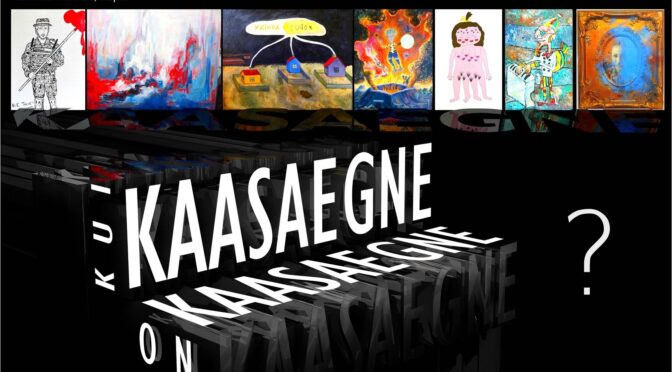Fall exhibition of the Estonian Painters’ Association
at the RCCCA
Oct 15 – Nov 7, 2021
Open Tue-Sun 3pm – 6pm
Tallinna mnt 3b, Rapla
Ja edasi:
Artists were invited to reflect on the topic of modernity and contemporaneity – a question plaguing artists in provincial areas worldwide – from Helsinki to Rapla – am I up to date? Even the Rapla County art centre bears the word “contemporary” in its name. Perhaps only New York is free from the pressure of keeping up.
“Contemporaneity” or “modernity” are not an issue in the art metropoli of the world – art being created there sets the bar for what is considered cutting edge. and they also offer the best opportunities for new art to reach its intended audience. But the audience requires novelty, demands to be surprised – and thus, a metropolitan “accent” evolves based on the colloquial artistic speech patterns in big art centres; this “accent” then becomes the normative grammar for the periphery.
The Estonian Painters’ Association used to hold its annual shows in our local metropolis. Nowadays, we’ve been relocated to Tartu, then Pärnu, Rapla, Võru and elsewhere. It is a bitter commentary to the policies of local art institutions that the medium of painting now finds itself homeless, permanently on tour. Looking on the bright side, painting has acquired widespread popularity through this process; “painting” still remains synonymous with “art” in the eyes of the public.
If we view the international painting scene through the lens of art fairs and biennials, the outstanding feature seems to be heterogeneity – we see interpretations of the Modernist heritage, retrospective revivals of past phenomena in art, the search for identity by artists of the so-called Third World – a colourful mixture of anything and everything.
A fresh injection of blood doping from art hand-picked by cultural anthropologists serves to satisfy the metropolis’ decadent cry for novelty, while these movements resonate in the most isolated, secondary corners of the planet. Zeitgeist is present, even in North Korea.
The current exhibition was deemed a valuable platform by a variety of personalities – from grand old names to Sunday painters. The dominant voice seems to be that of painters who habitually reflect upon their position as artists – those whose work emerges from inner impulses. Perhaps this makes them more convincing as creators?
Participants: Stanislav Antipov (1976), Paul Beaudoin (1960), Ove Büttner (1959), Jaan Elken (1954), Mauri Gross (1969), Ivi Arrak (1938), Kristiina Jakimenko (1991), Ashot Jegikjan (1955), Eva Jänes (1942), Ly Kaalma (1972), Kristiina Kaasik (1943), Liis Koger (1989), Gennadi Kurlenkov (1954), Maret Suurmets Kuura (1982), Anna Kõuhkna (1994), Mati Kütt (1947), Tarrvi Laamann (1973), Laurentsiust (Lauri Sillak,1969), Eneli Luiga (1994), Ene Luik-Mudist (1959), Helle Lõhmus (1962), Anne Moggom (1957), Lilian Mosolainen (1961), Marju Must (1987), Marko Mäetamm (1965), Karl Kristjan Nagel (1977), Ulvi Oro (1971), Tiiu Pallo-Vaik (1941), Anne Parmasto (1952), Per William Petersen (1955), Sirje Petersen (1959), Lii Pähkel (1969), Saima Randjärv (1954), Tiiu Rebane (1970), Piret Rohusaar (1961), Mari Roosvalt (1945), Uno Roosvalt (1941), Rait Rosin (1981), Leho Rubis (1975), Andrus Rõuk (1957), Toomas Sarapuu (1994), Karin Strohm (1986), Kuzja Zverev (1961), Karl-Erik Talvet (1991), Tiina Tammetalu (1961), Jane Tiidelepp (1971), Margus Sorge Tiitsmaa (1963), Maris Tuuling (1968).
Curator and exhibition designer: Jaan Elken.
In collaboration with: Tiiu Rebane (EML), Linda Elken, Riin Pallon (RCCCA).
Thanks to: Cultural Endowment of Estonia, Development Fund of Rapla municipalities
